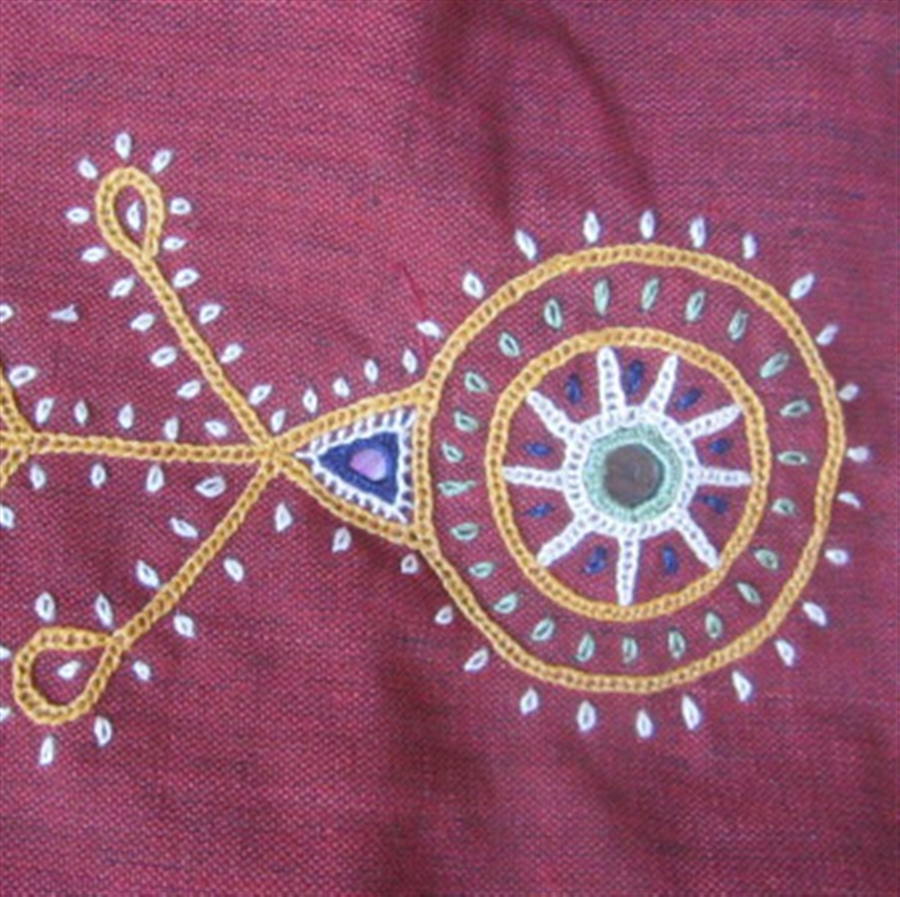
The use of satin stitches became more frequent in the late Tang dynasty to the early Song dynasty. However other forms of embroidery techniques existed including satin stitches which dates as early as the Han dynasty. From the ancient times to the Tang dynasty, the chain stitches were typically used in embroidery. It is the most frequently used form of stitches in Chinese embroidery. Satin stitch is one of the two main types of Chinese embroidery stitches along with the Pekin knots. Roundels in Peking knot and satin stitch, Qing dynasty, China. Satin stitch is also characteristic of Chinese embroidery. The satin stitch is a common form of needlework traditions worldwide it is notable in North Africa, South America, Western Asia, Southeast Asia, Indian Subcontinent, and the Middle East. Machine-made satin stitch is often used to outline and attach appliques to the ground fabric. In traditional practice, satin stitch is employed to fill an area without the presence of an outline, resulting in smooth shapes and even lines created by the stitching.


In order to maintain a smooth edge, shapes can be outlined with back, split or chain stitch before the entire shape including the outline is covered with satin stitch. Narrow rows of satin stitch can be executed on a standard sewing machine using a zigzag stitch or a special satin stitch foot. In sewing and embroidery, a satin stitch or damask stitch is a series of flat stitches that are used to completely cover a section of the background fabric. Detail of an altar frontal, France or Italy, 1730–40, Los Angeles County Museum of Art, M.2009.76. Flat embroidery stitch Satin stitch in silk.


 0 kommentar(er)
0 kommentar(er)
